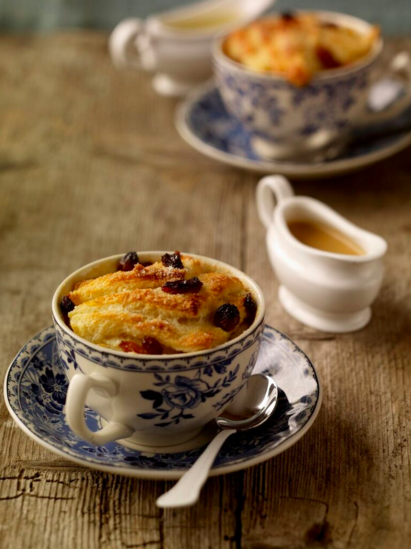Throughout centuries, Irish cuisine has built a tasty reputation by combining natural herbs and grains with succulent, tender meats. Hearty dishes prepared with rustic ingredients are the star of many Irish-themed menus.
Dating back to 7th century BC, Ireland’s predecessors, the Celts, prepared meals by stewing or roasting meat in cauldrons or large metal pots. This eventually birthed the native Irish stew. “One of the quintessential Irish dishes would be an Irish stew, normally made with lamb (or mutton), and must include onions, carrots, celery and potatoes,” says Chef Kevin Dundon of Raglan Road Irish Pub & Restaurant, located at Downtown Disney in Lake Buena Vista.
Traditionally, Ireland has utilized locally produced foods, but when spices were introduced to the country in 12th century BC, cinnamon and cloves were integrated into the roasting of pork and lamb, says Chef Dundon.
One of Ireland’s more reputable vegetables has always been the potato. Once the primary crop of Ireland, it’s now an appetite pleaser when mixed with cheeses, meat, and vegetables in some of Ireland’s most popular dishes. Colcannon is a dish that puts a unique spin on a simple buttermilk mashed potato by adding cabbage or kale and various seasonings into the mix.
The Shepherd’s Pie has become one of the best examples of the potato’s influence on European culture. Formerly known as “cottage pie,” it was developed in the 18th century by poor people living in cottages who relied on potatoes as their everyday food. Today, there is nothing poor about the richly whipped potatoes blanketing a bed of either lamb or beef and vegetables stewed in a tangy sauce.
The evolution of Irish food has lent itself to the attraction of cultures all over the world, including American cuisine. Raglan Road offers a menu of contemporary dishes that meld American favorites with Irish tradition. A flavorful combination of savory layers topped with a sweet honey-glazed shallot makes the pub’s Shepherd’s Pie a satisfying bite of modern authenticity.
Seafood is a prominent component in both American and Irish cuisine. Fresh fish is an accompaniment that ties the two contrasting cultures into its culinary relationship. The restaurant embeds fresh salmon and scallops into their menu, which makes for a plethora of flavor possibilities. Their citrus salmon, served with toasted almonds and a vinaigrette dressing, creates a delicate balance between texture and taste. “One key ingredient that I use on both sides of the Atlantic is the amazing seafood. The fish for Raglan Road is brought in from Boston, sourced from the Atlantic, so we can be sure of authenticity quality and flavor,” says Chef Dundon.
Irish food continues to grow in popularity in both Europe and America. Its marriage of ingredients with other cultures proves that it is not only exclusive to Ireland but can be experienced in your very own kitchen. “Ireland has now become a premiere culinary centre in Europe. As a result of Ireland’s cultural diversity, we have also embraced new ideas and trends in our kitchens,” says Chef Dundon.
You can embrace these trends too. For St. Patrick’s Day this year, why not make a traditional Irish meal for your family? Mom and Dad can even pair it with a pint of beer. The comforting dishes from Ireland can also be worked into your menu any time of year. Next time you’re whipping up a simple bowl of mashed potatoes, try adding an Irish twist by mixing in a leafy vegetable such as kale for your own rendition of Colcannon or top it with chunky sausage and onion gravy for a comforting plate of Bangers and Mash.
Irish cuisine isn’t all about savory flavors. End your meal on a sweet note with this classic dessert.
Traditional Bread and Butter Pudding
Ingredients:
-3 oz. butter, at room temperature
-12 slices medium-sliced white bread
-2 oz. raisins
-½ pint cream
-½ pint milk
-4 eggs
-3 oz. caster sugar
-½ teaspoon ground cinnamon
Directions:
Generously butter an ovenproof dish. Remove the crusts from the bread and, using the remaining butter, coat both sides then cut each slice into quarters. Arrange a single layer of the bread triangles, slightly overlapping in the bottom of the buttered dish. Scatter over some of the raisins and place another layer of the bread triangles on top and scatter over the remaining raisins. Press down gently with a fish slice or spatula. To make the custard, heat the cream and milk in a pan until it almost comes to a boil. Remove from the heat. Meanwhile, whisk together the eggs, ground cinnamon and sugar in a large heatproof bowl, set over a pan of simmering water, until thickened and the whisk leaves a trail in the mixture. Remove from the heat and beat in the cream mixture until well combined. Pour two-thirds of the custard over the layered-up bread triangles and leave to stand for about 30 minutes or until the bread has soaked up all of the custard. Pre-heat the oven to 180C/350F/Gas 4. Pour the remaining custard over the soaked bread and butter triangles and arrange the rest of the bread triangles on top. Press down firmly with a fish slice so that the custard comes halfway up the bread triangles. Bake for 30-35 minutes until the custard is just set and the top is golden brown. To serve, bring the bread and butter pudding straight to the table and have separate jugs of the butterscotch sauce and custard to hand around so that everyone can help themselves.




Comments